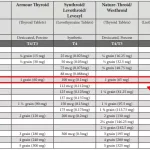Hey there! If you’ve ever wondered whether Medicare will actually foot the bill for the rehab you need after a surgery, a stroke, or just everyday age‑related challenges, you’re in the right spot. I’m going to break it down for you in plain English, no legal‑ese, no jargon—just the facts you need to feel confident about Medicare outpatient rehab. Grab a cup of coffee, settle in, and let’s walk through it together.
Quick Answers Overview
Yes, Medicare does cover outpatient rehab when it’s medically necessary. You’ll typically pay 20 % coinsurance after you’ve met the Part B deductible.
You need a physician‑ordered plan of care and a Medicare‑certified provider. Most of the time that means a Comprehensive Outpatient Rehabilitation Facility (CORF) or another approved outpatient rehab center.
That’s the gist—now let’s dig into the details so you know exactly what to expect.
Coverage Rules Explained
Medicare looks at four key things before it says “yes” to your outpatient therapy:
| What Medicare Checks | Why It Matters | Where to Verify |
|---|---|---|
| Skilled therapy needed | Only a licensed PT, OT, or SLP can safely perform the service. | according to Medicare Interactive |
| Physician or NPP order & review | A written, periodically reviewed plan of care is required. | CMS Manual System § 220.1.2 |
| Medical necessity | Treatment must improve function or prevent decline (no “restoration potential” needed). | according to Medicare Advocacy |
| Provider certification | Provider must be a Medicare‑certified CORF, OPT/OSP agency, or other approved outpatient rehab facility. | CMS “Outpatient Rehabilitation Providers” page |
Think of it like a bouncer at a club. If you have the right invitation (the plan of care), the right dress code (skilled therapy), and you’re at the right venue (a certified facility), you’ll get in without a fuss.
Eligibility Checklist Guide
Core Requirements
- Enroll in Medicare Part B (or have Part B through a Medicare Advantage plan).
- Obtain a physician‑ordered skilled therapy referral for PT, OT, or speech‑language pathology.
- Have a written plan of care that’s reviewed at least every 90 days.
- Receive services from a Medicare‑certified provider (most often a CORF).
Typical Situations That Trigger Coverage
- Recovering from joint replacement, cardiac surgery, or a serious fall.
- Rehabilitation after stroke or traumatic brain injury.
- Ongoing therapy to maintain function for chronic conditions like COPD, Parkinson’s, or arthritis.
When Coverage May Be Denied
- The therapy is deemed “not medically necessary” because the claim lacks a clear physician justification.
- No up‑to‑date plan of care is on file.
- The provider is not Medicare‑certified (e.g., a private clinic without a CORF number).
Let me share a quick story. My aunt, 72, was denied PT after her knee replacement because the clinic forgot to upload the updated physician’s note. After her surgeon called the clinic and submitted the missing documentation, Medicare approved the claim within two weeks. The lesson? Keep that paperwork fresh and stay on top of your provider’s paperwork.
Understanding Cost Details
Standard Medicare Part B Cost Structure (2025)
- Deductible: $257 before any therapy is covered.
- Coinsurance: 20 % of the Medicare‑approved amount after you’ve met the deductible.
Annual Therapy Dollar Limits (2025)
| Therapy Type | Maximum Covered Before Review* | 80 % of Approved Amount |
|---|---|---|
| Physical Therapy (PT) & Speech‑Language Pathology (SLP) | $2,410 | $1,928 |
| Occupational Therapy (OT) | $2,410 | $1,928 |
*When you cross these thresholds, Medicare asks the provider to prove the therapy is still medically necessary. This is called a “therapy review” and it’s more paperwork than a penalty.
How to Reduce Out‑of‑Pocket Costs
- Choose participating providers (they accept Medicare assignment and won’t bill you more than the approved amount).
- Ask your therapist if services can be bundled—sometimes a combined PT/OT session counts as a single claim.
- Consider a supplemental Medigap plan that covers the 20 % coinsurance.
- Keep an eye on the total dollar amount; if you’re approaching the $2,410 limit, ask your provider for a progress note that demonstrates continued need.
What Is a CORF
Definition & Why It Matters
A Comprehensive Outpatient Rehabilitation Facility (CORF) is a Medicare‑certified outpatient center that delivers a multidiscipline program (PT, OT, and speech‑language pathology) under physician supervision. In plain language, think of a CORF as the “all‑in‑one” rehab gym where you get everything you need in one place and Medicare pays the full bill (subject to the usual Part B coinsurance).
Key CORF Requirements (per CMS)
| Requirement | Detail |
|---|---|
| Physician Presence | A physician must be on‑site or immediately available for consult. |
| Multidisciplinary Team | At least two of the three therapy specialties (PT, OT, SLP) must be offered. |
| Plan of Care | Written by the physician and reviewed at least every 30 days for intensive programs. |
| Documentation | Must meet CMS 42 CFR 485.709 & 485.717 (except for public‑health agencies). |
Choosing the Right CORF
- Verify the facility’s CMS certification number on Medicare.gov.
- Ask about outcome metrics—average improvements in the Functional Independence Measure (FIM) are a good indicator.
- Check whether they provide transportation assistance; many seniors appreciate a shuttle service.
- Read patient reviews for bedside manner; a friendly staff can make a huge difference in recovery.
Comparing Facility Options
| Facility Type | Medicare Certification | Typical Services | Pros | Cons |
|---|---|---|---|---|
| CORF | Yes (CMS) | PT, OT, SLP, physician oversight | Full coverage, multidisciplinary, no therapy cap | May require physician referral |
| OPT/OSP Agency | Yes (OPT/OSP) | One or two therapy modalities | Often shorter wait times | May lack on‑site physician |
| Private Outpatient Clinic | No | Limited services, often single modality | Flexible scheduling | Usually not covered by Medicare |
| SNF Outpatient | Yes (SNF outpatient) | Therapy within a skilled nursing setting | Integrated with inpatient services | Potentially higher coinsurance |
Use this table as a quick reference when you’re calling around. It’s like a cheat‑sheet for choosing the “right fit” for your rehab journey.
Step‑by‑Step Process
- Get a Physician Referral. Your doctor must order the therapy and sign the plan of care.
- Confirm Provider Certification. Look up the facility’s Medicare provider number (CMS website).
- Submit the Initial Claim. Your therapist will bill Medicare Part B using the appropriate HCPCS codes (e.g., 97001‑97003, 97110‑97112).
- Track Your Costs. Monitor your deductible, coinsurance, and any “therapy review” notices.
- Appeal if Denied. Write a concise appeal letter, attach the physician’s justification, and include therapist progress notes. According to Medicare Interactive, you have the right to appeal within 60 days of the denial.
- Evaluate Progress. Keep a personal log of functional gains—where you can walk farther, lift heavier, or speak clearer. Share it with your therapist at each plan‑of‑care review.
My neighbor, Tom, followed this exact checklist after a hip replacement. By keeping a simple spreadsheet of his weekly milestones, he was able to show his therapist the continued need for PT, which prevented a costly denial when his costs neared the $2,410 cap.
Common Myths Debunked
| Myth | Reality |
|---|---|
| “Medicare no longer pays for outpatient therapy.” | The 2018 therapy‑cap repeal removed the annual limit, but Medicare still covers PT, OT, and SLP when medically necessary. |
| “You must stay in an inpatient rehab to get Medicare coverage.” | Outpatient rehab is fully covered as long as the criteria above are met. |
| “Only the severely ill qualify for therapy.” | Medicare also covers therapy aimed at maintaining function or slowing decline, not just acute recovery. |
| “All outpatient clinics are Medicare‑certified.” | Only facilities that meet CMS standards (CORF, OPT/OSP, etc.) can bill Medicare. Private clinics may charge you out‑of‑pocket. |
Helpful Resources & Tools
- Medicare Interactive – Outpatient Therapy Costs
- Medicare Provider Search (to verify CORF certification)
- Medicare Advocacy – Quick Guide to Outpatient Therapy
- State health department websites often list local Medicare‑certified rehab facilities.
Keep these links handy; they’re like a toolbox you can dip into whenever a question pops up.
Conclusion
Navigating Medicare outpatient rehab can feel like untangling a knot of paperwork, but once you understand the four pillars—physician order, skilled therapy, medical necessity, and a certified provider—you’ll have the confidence to get the care you deserve. Remember: you pay a modest 20 % coinsurance after the Part B deductible, you have annual cost thresholds that trigger a review (not a denial), and you can appeal if anything goes sideways. Use the checklist, compare facilities, and keep a log of your progress. Most importantly, don’t be shy about asking questions—your health is worth it.
What’s your experience with Medicare rehab? Have you run into a paperwork hiccup or discovered a great CORF near you? Drop a comment below, share your story, or reach out if you have any lingering questions. We’re all in this recovery journey together, and I’m here to help you make sense of the system, one step at a time.


















Leave a Reply
You must be logged in to post a comment.